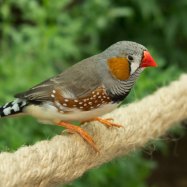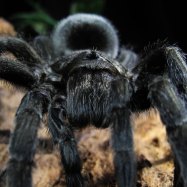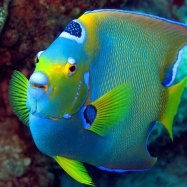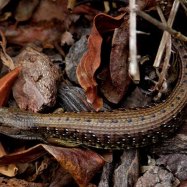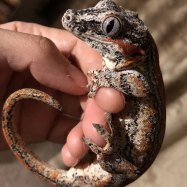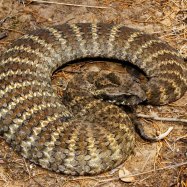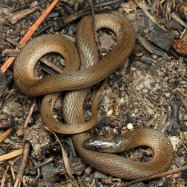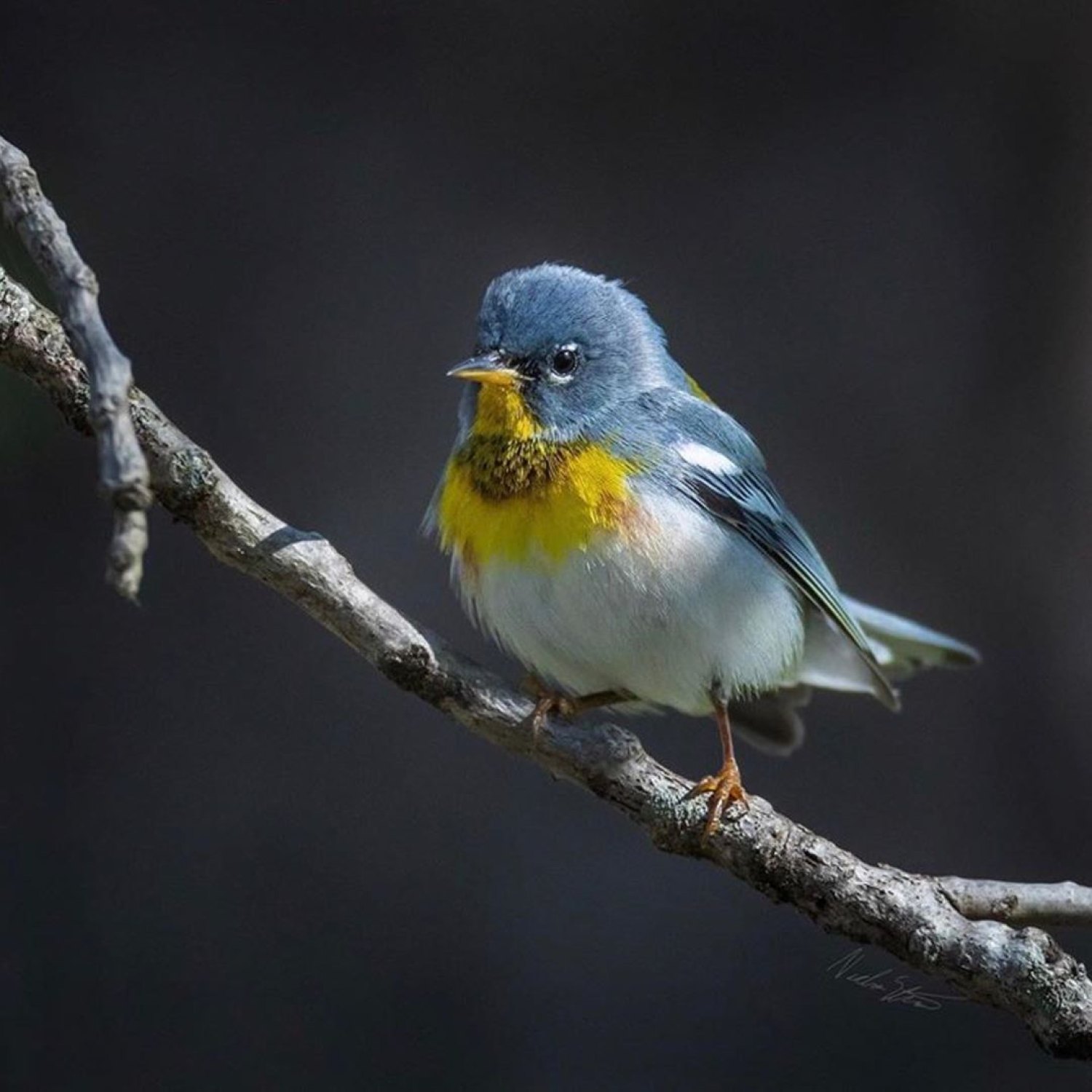
Northern Parula
11 - 12.5 centimeters
The Northern Parula, a small and compact bird found in eastern and central United States and southern Canada, is known for its vibrant blue and yellow colors. This member of the Parulidae family measures 11 - 12.5 centimeters in length and is a popular sight among birdwatchers. Have you spotted one in the wild? #NorthernParula #birdwatching #USwildlife
Animal Details Summary:
Common Name: Northern Parula
Kingdom: Animalia
Habitat: Deciduous and mixed forests, swamps, and mangroves
The Tiny but Mighty Northern Parula: A Hidden Gem of North America
Hidden amongst the leaves of North America's deciduous and mixed forests, swamps, and mangroves, lives a small but mighty bird – the Northern Parula. This little creature may be tiny in size, but it is filled with unique characteristics that make it stand out in the avian world. From its striking blue-gray back to its insectivorous feeding method, the Northern Parula is a true gem of nature.An Introduction to the Northern Parula
The Northern Parula, also known by its scientific name Setophaga americana, is a small migratory songbird belonging to the kingdom Animalia, phylum Chordata, and class Aves Northern Parula. It belongs to the order Passeriformes and the family Parulidae, which includes other warbler species such as the American Redstart and the Cape May Warbler.As its name suggests, the Northern Parula can be found in the northern parts of North America, particularly in the eastern and central regions of the United States and southern Canada. It is also known as the "Blue Yellow-backed Warbler" due to its distinctive coloration.
The Northern Parula's Habitat and Distribution
The Northern Parula is a bird of many habitats, often found in deciduous and mixed forests, swamps, and mangroves. These birds require trees for both perching and nesting, making these habitats the perfect home for them. They are also known to occasionally inhabit parks and suburban areas, particularly those with a dense tree cover.In terms of distribution, the Northern Parula can be found throughout North America, but it is predominantly seen in the United States and Canada. In the spring, it can be seen in the south-central and eastern regions of the United States, and as far north as Newfoundland and Labrador in Canada.
During the fall, the Northern Parula migrates south to the Greater and Lesser Antilles in the Caribbean and parts of Central and South America Norwegian Lundehund. Their migration patterns have been known to cover vast distances, with some individuals traveling as far as 5,000 kilometers.
The Northern Parula's Physical Features
The Northern Parula may be small and compact, but it is endowed with many unique physical features that make it stand out among other birds. It has a body length of 11-12.5 centimeters, with a wingspan of 15-16 centimeters. Its body shape is slightly stocky, with a relatively short tail.One of the most striking features of the Northern Parula is its intricate coloration. Its back is a beautiful blue-gray, with a distinct yellow patch on its chest and a white belly. Its throat also has a brownish band, which adds to its striking appearance. Additionally, it has white wing bars and a black and white eye ring, making it easy to identify in the wild.
The Northern Parula's Feeding Method
The Northern Parula is an insectivorous bird, meaning it primarily feeds on insects. Its preferred food sources include caterpillars, beetles, flies, and spiders. These tiny birds are known to forage in the treetops, picking insects off the leaves and branches with their sharp beaks.Apart from insects, the Northern Parula also consumes small fruits, particularly during the fall migration when insect availability may be limited. However, fruits make up a small proportion of their overall diet, with insects being their main source of nutrition.
The Northern Parula's Breeding Behavior
The breeding season for the Northern Parula starts in late April and continues until August. During this time, the males establish their breeding territories and perform intricate courtship displays to attract females. These displays include singing while perched on a branch or fluttering their wings to show off their brightly colored feathers.Once a pair has bonded, they work together to build a cup-shaped nest using materials such as grasses, spider silk, and feathers. The female then lays a clutch of 2-5 eggs, which she will incubate for 11-14 days. Once the eggs hatch, both parents take turns feeding the chicks until they fledge in approximately 10-11 days.
The Northern Parula's Conservation Status
The Northern Parula has a widespread distribution throughout North America and is not considered a globally threatened species. However, its populations have been gradually declining in some areas due to habitat loss and fragmentation caused by deforestation. Additionally, they are also vulnerable to predators such as cats, snakes, and larger birds.Thankfully, there have been efforts to protect the Northern Parula and its habitat. Organizations such as the National Audubon Society and the Nature Conservancy have been working towards preserving forests and creating safe nesting habitats for these birds.
In Conclusion
In a world full of majestic and awe-inspiring creatures, the Northern Parula may be easily overlooked due to its small size. However, this tiny bird is a true wonder of nature, with its intricate coloration, unique habitat requirements, and dedicated parenting behavior. With continued efforts towards conservation, we can ensure that these birds continue to brighten our forests with their beautiful songs and presence for generations to come. So next time you're out in nature, keep an eye out for the Northern Parula – a hidden gem of North America.

Northern Parula
Animal Details Northern Parula - Scientific Name: Setophaga americana
- Category: Animals N
- Scientific Name: Setophaga americana
- Common Name: Northern Parula
- Kingdom: Animalia
- Phylum: Chordata
- Class: Aves
- Order: Passeriformes
- Family: Parulidae
- Habitat: Deciduous and mixed forests, swamps, and mangroves
- Feeding Method: Insectivorous
- Geographical Distribution: North America
- Country of Origin: United States and Canada
- Location: Eastern and central United States, and southern Canada
- Animal Coloration: Blue-gray back, yellow chest, and white belly
- Body Shape: Small and compact
- Length: 11 - 12.5 centimeters
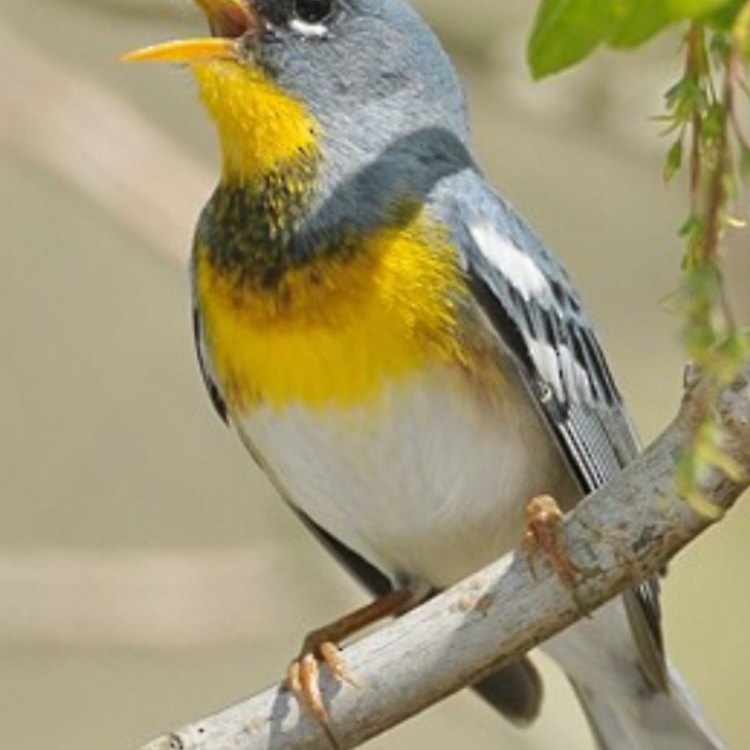
Northern Parula
- Adult Size: Small
- Average Lifespan: 4 - 7 years
- Reproduction: Sexual
- Reproductive Behavior: Monogamous
- Sound or Call: High-pitched, buzzy song
- Migration Pattern: Migratory
- Social Groups: Solitary or in small groups
- Behavior: Active foragers
- Threats: Habitat loss, climate change, and predation
- Conservation Status: Least Concern
- Impact on Ecosystem: Important insect control
- Human Use: Birdwatching and ecotourism
- Distinctive Features: Yellow chest with a crescent-shaped band
- Interesting Facts: Northern Parulas are one of the smallest warbler species in North America
- Predator: Birds of prey and snakes
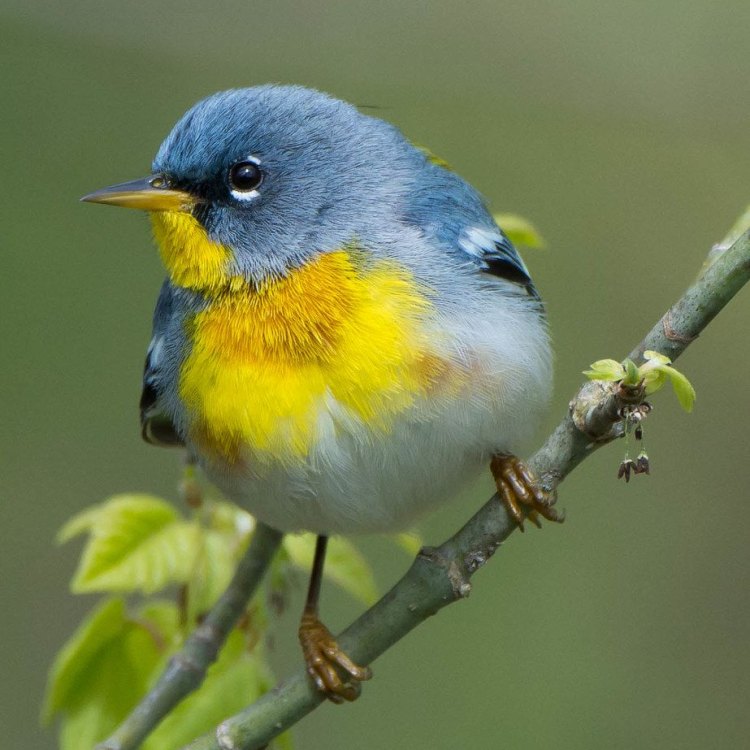
Setophaga americana
The Colorful and Vibrant World of the Northern Parula Warbler
The lush green forests of North America are home to a wide variety of birds. One such species is the Northern Parula, a small and vibrant songbird that is a treat to watch. With its yellow chest and a striking crescent-shaped band, the Northern Parula is a distinct and charming bird that has captured the hearts and attention of bird enthusiasts and nature lovers alike.In this article, we will dive into the fascinating world of the Northern Parula and explore its unique features, behavior, and role in the ecosystem PeaceOfAnimals.Com. So, grab your binoculars and get ready to be mesmerized by the beauty of this pint-sized bird.
Size and Habitat
As the name suggests, the Northern Parula is found in the northern region of North America, including Canada, the United States, and parts of Mexico. They prefer to inhabit moist and dense areas, such as deciduous and mixed forests, swamps, and riverbanks. These small birds have a body length of around 4-4.5 inches and weigh only a few grams, making them one of the smallest warbler species in North America.Migratory Patterns
Northern Parulas are migratory birds, meaning they travel long distances every year to find suitable breeding and nesting sites. They spend their winters in the southern regions of the United States, Central America, and the Caribbean and migrate north during the breeding season. These birds are known for their long-distance flights, and some individuals have been recorded traveling up to 1,900 miles during the migration period.Reproduction and Behavior
Northern Parulas are monogamous and form pair bonds during the breeding season Northern Inuit Dog. They typically lay four to five small white eggs in a well-hidden and suspended nest made of grass, moss, and lichens. The females are responsible for incubating the eggs, while the males bring food to the nest.These active foragers can be seen hopping around trees and shrubs, searching for insects and spiders. They have a high-pitched, buzzy song that can often be heard before they are spotted. Despite their small size, Northern Parulas are very territorial and will defend their breeding territories vigorously.
Threats and Conservation Status
Like many other bird species, the Northern Parula faces several threats, including habitat loss, climate change, and predation. These birds require dense forests for breeding and nesting, which are rapidly being cleared for urban development and agriculture. Climate change also poses a significant threat to their survival as it alters their preferred habitats.Despite these challenges, the Northern Parula is currently listed as ‘Least Concern’ on the IUCN Red List, with stable populations. However, conservation efforts are still essential to ensure the long-term survival of this beautiful bird.
Impact on the Ecosystem
Northern Parulas play a crucial role in their ecosystem as they are important insect controllers. These birds primarily feed on insects, such as caterpillars, beetles, and flies, helping to maintain insect populations in check. By doing so, they also indirectly benefit plants and other animals that rely on these insects for food.Their presence in forests also provides a positive impact on the ecosystem by helping to disperse seeds, pollinate flowers, and control pest populations. Therefore, losing these birds would have a significant impact on the delicate balance of their habitats.
Human Use
The Northern Parula may not have any direct economic value, but they are highly sought after by birdwatchers and ecotourists. These small, colorful birds are a delight to watch, and many people travel to their breeding grounds to observe and photograph them. Birdwatching tours and ecotourism activities also contribute to the local economy, making the Northern Parula an essential part of human recreation and enjoyment.Distinctive Features
The Northern Parula is easily recognizable by its striking yellow chest and a distinct crescent-shaped band across its chest. The upperparts of the bird are a bluish-gray color, and they have a thin white eye-ring. The females are slightly duller in color compared to the males, but both have the signature yellow chest that sets them apart from other bird species.Interesting Facts
Apart from their unique features and intriguing behavior, Northern Parulas have some other interesting facts that make them stand out. These tiny birds have a relatively long lifespan of 4-7 years, and they are more commonly found in solitary or small groups rather than in large flocks. They are also known to be preyed upon by birds of prey and snakes, adding to the challenges they face in the wild.In Conclusion
The Northern Parula may be small in size, but it is a big part of the ecosystem of North America. With its colorful appearance, active foraging behavior, and important role in insect control, this bird is a vital member of the forest community. However, like many other bird species, it faces several threats that need to be addressed to ensure its continued survival.By learning about and appreciating the unique features and behavior of the Northern Parula, we can develop a deeper understanding of the natural world and the interconnectedness of all species. So, next time you take a walk in the forest, keep an eye out for this charming and remarkable bird, and remember the important role it plays in maintaining the balance of our ecosystem.
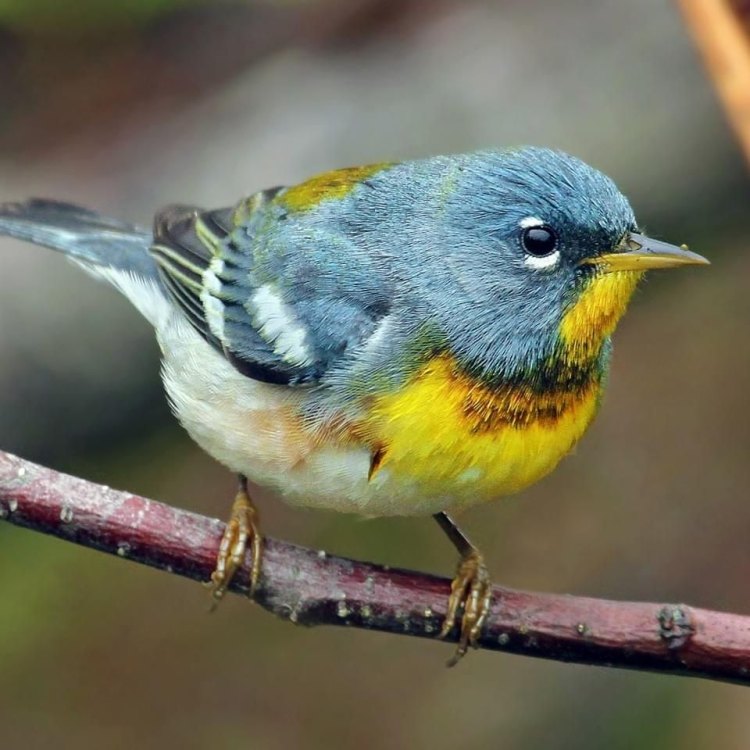
The Tiny but Mighty Northern Parula: A Hidden Gem of North America
Disclaimer: The content provided is for informational purposes only. We cannot guarantee the accuracy of the information on this page 100%. All information provided here may change without prior notice.

